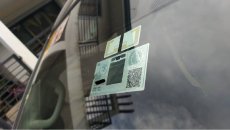CAR TIPS & ADVICE
10 Basic Road Lines Meaning Philippines - Must-know to Drive Safely
Oct 18, 2022
Reading road markings is an important skill for new drivers, but it's a skill that even seasoned drivers seem to lack. Perhaps it's because our signs and road markings seem to be in a constant state of flux, and even the authorities who paint them are often confused as to where they should actually go.
What are road lines meaning Philippines? Learn to understand road lines meaning PH in this article because they can save your life.
1. Solid White Shoulder Line
Solid white shoulder line is used to separate traffic between two traffic streams. It is certainly used on multi-lane roads and must be distinguished from broken lines. It also means that drivers are discouraged from passing on this side unless there is no traffic ahead.

Solid white shoulder line is used to separate traffic between two traffic streams
2. Diagonal White Line
White diagonal lines are usually outlined by a solid white line. Vehicles must not occupy these areas unless there is an emergency. These areas are often used to ease traffic when roads diverge or intersect.
3. Broken White Line
These lines can be seen in two situations. One is when you're on a two-lane road. The dashed white line represents the centers of the two lanes. Second, on a road with multiple lanes, these road line markings meanings drivers should stay in their lanes. You can cross these lanes when you want to pass, but be aware of people already in that lane.

Broken White Line
4. Solid White Center Line
This is often used to divert traffic on a two-way multi-lane road. Since this is a solid line, you should not cross it unless the line is completely clear.
5. Solid White Double Center Line
You are prohibited from crossing this line, but you may turn left across this line, as long as the road is clear of traffic. However, keep in mind that other vehicles that appear will still automatically have priority. Always remember to drive safely!

Solid White Double Center Line
6. Solid Yellow Double Center Line
As we noted a while ago, this road marking indicates that it is not safe to pass at any time. It is often found around hidden bends or in areas where fast-moving two-way traffic meets on a road without a median.
7. Mixed center line/solid yellow with broken yellow or white line
These transition lines road indicate that only one side can cross - the side with the broken line. This is often found when entering curves where visibility is obscured from one direction, but clear from the opposite.
8. Directional arrows
When combined with a solid white divider, directional arrows indicate which directions you are allowed to go in a lane. If the arrow points forward, you cannot turn from that lane. If it's facing forward and sideways, you can go straight or turn. If it is only going to one side, you must turn in that lane. Ignoring these arrows could just land you a fine or worse, get you into an accident.
9. Rumble strips
These tightly spaced white horizontal lines not only give your car's suspension a softer look, but also indicate hazards ahead, such as treacherous bends or merging traffic.

Rumble strips
10. Yellow box
This box indicates that the intersection must always be open by law. Even if you have a green light, if traffic is stopping on the other side ahead, it is best to wait until there is enough space for you to pass the yellow box. Even in the absence of light, the yellow box must be kept clear.
Conclusion
Keep these road markings in mind and make sure you comply with more than 90% of the laws for drivers on Philippine roads. And hopefully, you'll be safer once you understand these road lines meaning Philippines. See you in another our articles in Philcarreview.com
-

Car battery lifespan and tips to extend battery life
-

Best Hatchback Cars Philippines Suggestion For You
-

Things You Should Keep In Mind When Buying Used Car
-

Car Conduction Sticker: Where & How Can You Get It In The Philippines?
-

South East Metro Manila Expressway: Route Map & Latest Update
-

LTO RFID Sticker Penalty 2020: Every Driver Should Know
-

Ped Xing Meaning: What Does This Mysterious Sign Actually Mean?
-

What are Toyota Rush problems in the Philippines?



